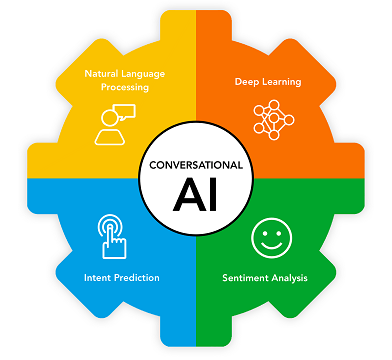

Let’s start with the basics: IVR or, for long, interactive voice response, is a software system that interacts with callers by asking them to answer its prerecorded prompts either verbally or by pressing touch-tone keys. The IVR then responds in a programmed way and so on.
We’re all familiar with IVRs. (Don’t confuse them with “voice user interfaces,” the intelligence behind your smart speakers.) They’ve been around forever—since the early 1980s!—and really made it big in airline reservation call centers. People of a certain age will probably remember “Press one for reservations. Press two for flight status.” That was as far as the IVR went, basically sorting callers into one of two camps; once sorted, you were whisked to a live agent or to an infrequently updated recording of the day’s departures and arrivals (or, just as likely, placed on hold to confront another horror: canned music).
Customer service departments are today’s most prevalent IVR users. It’s funny to think that, much like the predicted impact of “labor saving” appliances on domestic chores in the 1950s, IVRs were projected to make obsolete the call centers of the early 2000s. Clearly, neither domestic chores nor contact centers have faded away. In fact, CX agent services, at least, are more relevant now than ever. It turns out IVRs haven’t replaced humans; instead, they made live agents faster, better informed, better connected, more accurate, and more efficient—overall, better equipped to handle the more nuanced or complicated issues beyond the IVR system’s capabilities.

Today’s AI-powered conversational IVR systems aim ever higher: The goal now is to delight customers by seamlessly understanding caller intent, as expressed through the caller’s natural speech, and responding appropriately until the issues are efficiently resolved. That’s a tall order and you’ve every right to be skeptical; vendors and pundits no doubt oversold IVR’s transformative effects in the early days. But now IVRs equipped with advanced natural-language processing, accurate intent prediction, neural text to speech, voice biometrics, machine learning, and other rich interactive capabilities are able resolve issues as much as 80 percent of the time. And when they can’t, they recognize that, and make the handoff to agent assistance smoothly—passing along all the information they’ve gathered to that point.
I’ll define two of the terms noted above: neural text to speech and voice biometrics.
Neural text-to-speech converts text into lifelike speech, on the fly, no voice talent required. It fine-tunes pitch, inflection, intonation, tempo, and more to make automated talk sound like an actual person.
Voice biometrics is a way to authenticate callers using their own voice inputs rather than having them answer security questions or supply passcodes. It’s fast, friction-free—and secure.
Callers, by and large, are more satisfied when dealing with natural-sounding, intuitive, and effective interactions. Companies, too, benefit from greater flexibility and agility, and the ability to dramatically increase customer self-service—what the industry calls “containment.” We see that most customers actually prefer to self-serve, especially if it means taking care of business more easily and quickly, which also boosts customer satisfaction.
So yes: Today’s conversational IVRs are truly homing in on producing delight.
To be sure, customers are more tech savvy, and many of them can’t imagine life without messaging apps, but it’s a mistake to think “modern” customers have abandoned using their phone as, well, a phone. Here’s how it often works now.
Many, perhaps most, customer service journeys begin digitally because, as noted, customers prefer to self-serve. These customers initiate a call when they can’t find answers or complete their journey online. When they (perhaps grudgingly) enter the IVR, they’re usually further along in their journey than typical customers, and they expect to pick up where they left off; that is, they expect not have to repeat themselves. Also, the issues these customers bring are typically more complicated than those presented online because the conversation has been escalated from a channel that couldn’t handle the situation (say, a not-so-smart bot).
And, needless to say, these customers have almost certainly been to your website and are probably on it when they call.
Traditional IVR evinces many failings—it doesn’t communicate with other channels, it isn’t visual or mobile friendly, it isn’t web aware, it doesn’t understand what customers are saying and thus doesn’t understand their intent, it’s just plain hard to use—but for now, let’s look at the benefits of fixing just one of these pain points: Being web-unaware.
When an IVR recognizes that callers are simultaneously on a company’s site, it enables the organization to create a more personalized conversation, in real time, which is a huge deal for customers and a huge win for companies. Web-aware conversational IVR creates seamless, cross-channel customer experiences that obviate channel-switching, reduce customer effort and minimize their frustration, and lower a company’s costs.
In a nutshell, here are the four main benefits for customers and companies.
[24]7.ai™ AI-powered conversational IVR delivers delightful customer experiences—and saves organizations a lot of money to boot. To learn how, check out these resources: